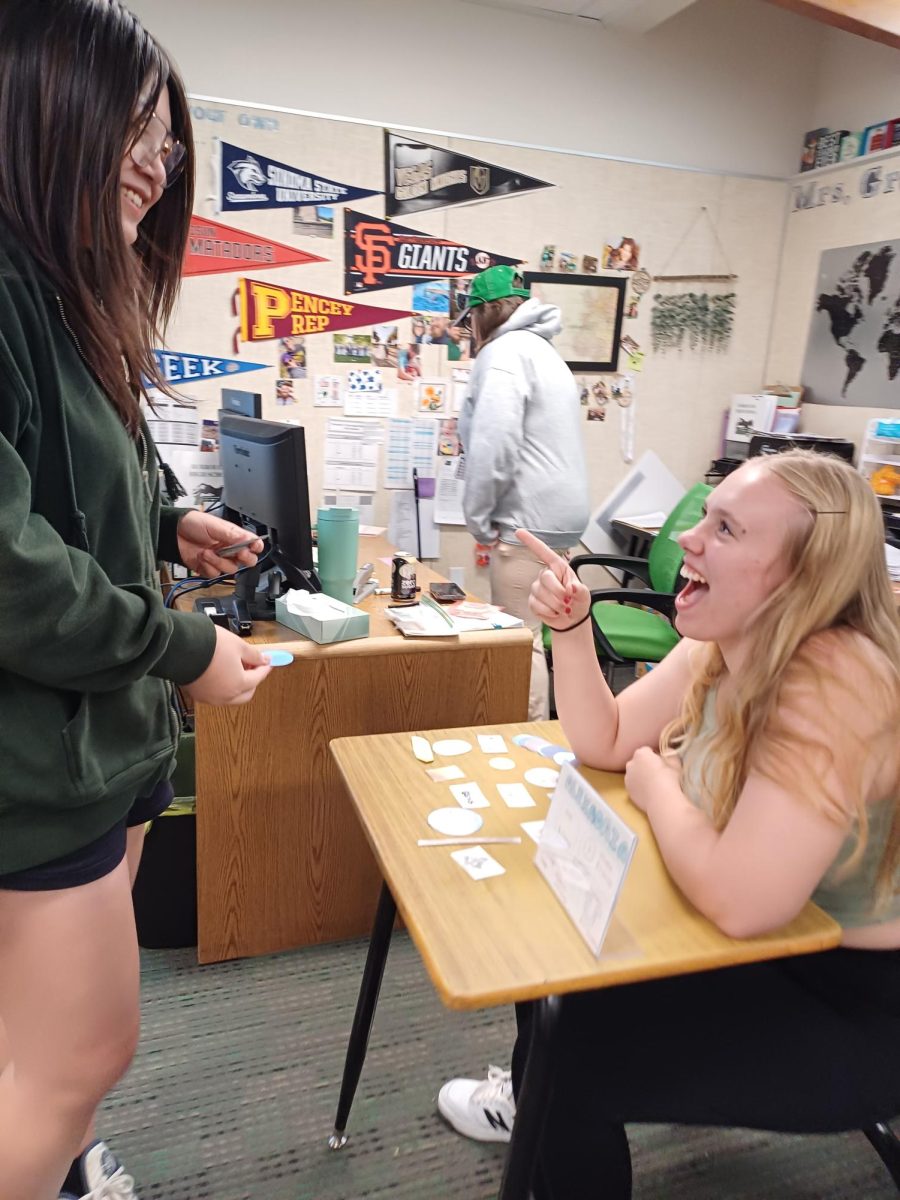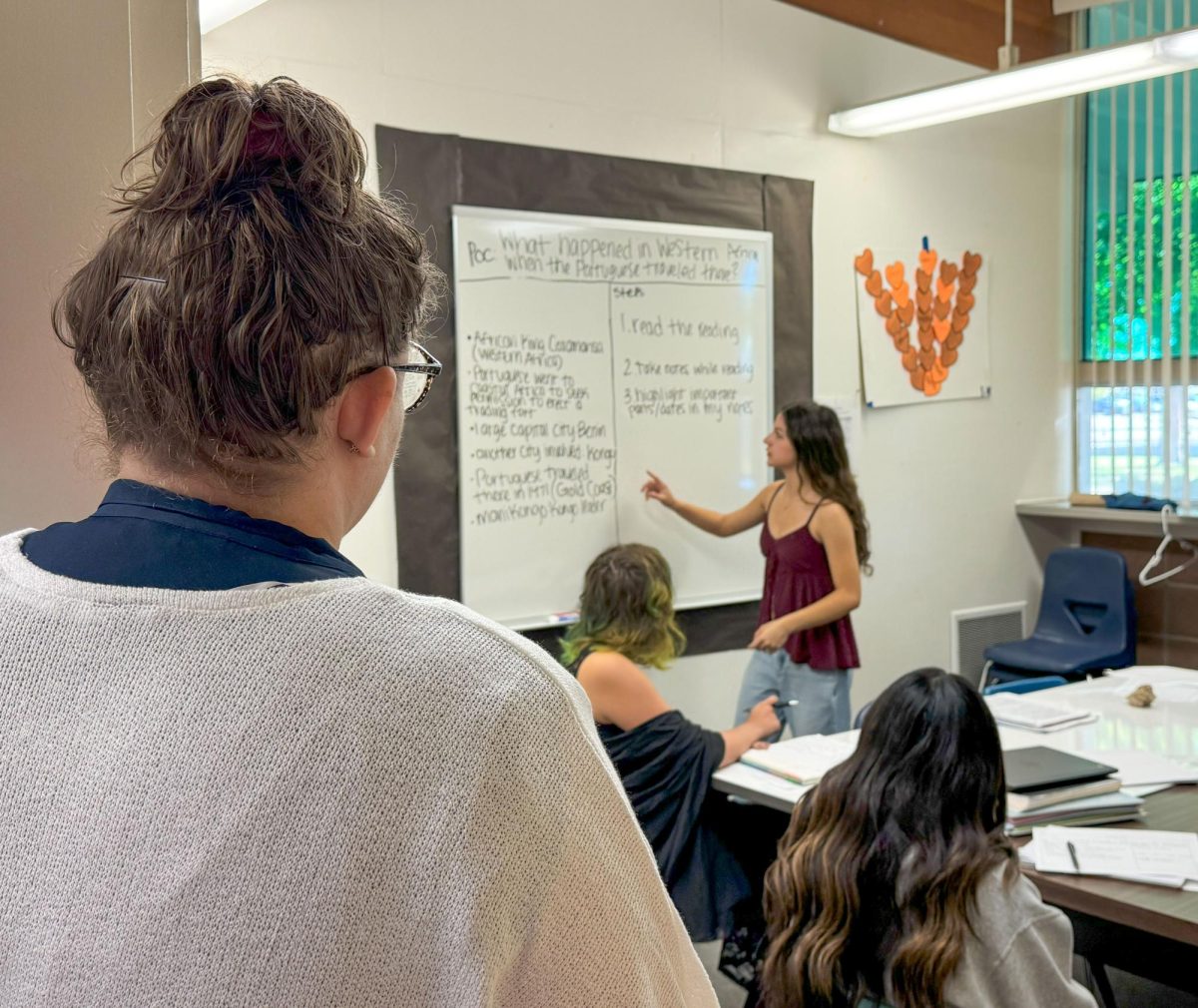“Live it to learn it.”
One of the best ways to understand a concept is through experiential learning. With that in mind, Honors Modern World History Teacher Emily Grogman hosts an Indian Ocean trade game for her classes annually to accompany their unit on trade routes.
According to the rules, students were split up into pairs. One represented the port city with the other acting as a ship captain. Each pair was provided with a document of trade goods and any technologies their port city had and items they needed. Port cities in the following five regions were presented as options : East Africa, Red Sea and Persian Gulf, India, Southeast Asia, and China. Classes were given four days to prepare respective trade goods and tactics. They got in touch with their creative side and drew trade goods on paper to cut out to display at their port city. Grogman also required a small decorative poster with prices listed.
Once the game began, it was negotiation chaos. The objective was to accumulate most money in gold and silver and technologies for their port city. By Grogman’s instruction on which direction to move towards, ship captains roamed the room to attain as many needed trade goods and technologies as possible. The different and changing directions represented the seasonal winds of the regions.
Everyone had their eyes on the prize, which remained a mystery until the winners were announced. Also, as with any game, there was a catch. Ship captains were not allowed to communicate with their port city until the break time came. The break times emulated the months the ships spent at sea.
Each round lasted three minutes in each region. The three minutes acted as two months’ time back in the fourteenth century. By the end of the game, each group was supposed to have at least five trade goods and four technologies. If a pair did not meet these requirements, they had to draw a risk card.
Winners were chosen based on how much gold and silver they had remaining at the end of the game. Grogman revealed the winners the following Monday.
Sophomore Quan Laskey emerged in first place for his fourth-period class.
“I think one of the best parts of my strategy was being able to yell at ships as they passed and attract them to my port,” said Laskey. “My partner Justin Abercrombie (10), also was a big help. He went to other ports and sold and traded our goods, adding to our total profits. Preparation by studying was essential, as I used that information to sell them what they needed.”
Grogman’s trade game pays benefits beyond the immediate immersion in the subject matter.
“I think it’s a great game to do at the beginning of the year as it helps the class bond in a way that allows for more in-depth conversations later in the school year,” said Grogman. “I enjoy seeing students having fun and hearing from students when they’re juniors and seniors still talking about the game and how much fun they had.”






